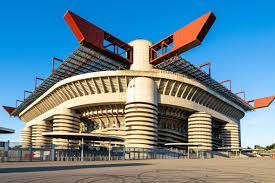San Siro stands as a monumental icon in the world of football, revered not only for its architectural grandeur but also for the rich tapestry of history woven within its walls. As one of the most iconic stadiums globally, it has become synonymous with passion, drama, and unforgettable moments that define the beautiful game new 88.
Introduction to San Siro
The significance of San Siro transcends mere bricks and mortar; it is a living testament to the fervent spirit of football that captures the hearts of millions around the globe. Located in Milan, Italy, this stadium epitomizes the confluence of sport, culture, and community, making it a cherished landmark for fans and players alike.
Throughout its storied existence, San Siro has been the stage for countless thrilling encounters, where heroes were born and legends were crafted. Its very name evokes a sense of nostalgia for memorable matches, electrifying atmospheres, and the sheer love of football. As we delve into the history, iconic moments, and future prospects of San Siro, it becomes evident why this stadium holds a special place in the annals of sports history.
The History and Evolution of San Siro
The journey of San Siro began in the early 20th century, driven by the pursuit of creating a venue that could capture the essence of football in Milan.
Origins and construction – When and why it was built
Constructed in 1926, the San Siro stadium was initially known as Stadio Giuseppe Meazza, named after the legendary Italian striker who would go on to become a symbol of Milanese football. The vision behind its construction was to provide a modern facility that could accommodate a growing fanbase, reflecting the profound passion for the sport within the city.
The architectural design was groundbreaking for its time, featuring an innovative oval shape that allowed for optimal viewing angles. Designed by architect Ulisse Stacchini, the stadium was originally built to host the games of AC Milan, and its capacity of over 35,000 made it one of the largest stadiums in Italy at the time. The aim was not only to create a venue for matches but to cultivate a communal space where fans could gather and celebrate their love for the game.
Architectural expansions and upgrades – Major renovations over the decades
As football evolved, so did San Siro. Over the decades, the stadium underwent significant renovations and expansions to enhance the spectator experience and increase capacity.
In the 1950s, major modifications were undertaken, including the addition of roofs above the stands and improvements to the seating arrangements. These upgrades transformed San Siro into a modern arena that could rival the best stadiums across Europe while maintaining its distinctive character.
The most notable renovation occurred ahead of the 1990 FIFA World Cup, which saw the stadium’s seating capacity increased to approximately 80,000. This transformation solidified San Siro‘s status as a premier venue for both club and international competitions, demonstrating its adaptability and commitment to hosting world-class events.
Shared home of AC Milan and Inter Milan – How both clubs shaped its legacy
One of the unique aspects of San Siro is its dual ownership by two of Italy’s most successful football clubs: AC Milan and Inter Milan. This shared arrangement has infused the stadium with a rich rivalry that resonates profoundly among fans.
Every matchday, San Siro transforms into a battleground where supporters of both clubs passionately cheer for their respective teams. The Derby della Madonnina, the iconic clash between AC Milan and Inter Milan, showcases the fervor of this rivalry as the stadium reverberates with chants, colors, and emotions. The spectacle of thousands of fans converging at San Siro creates an electric atmosphere that embodies the essence of Italian football.
